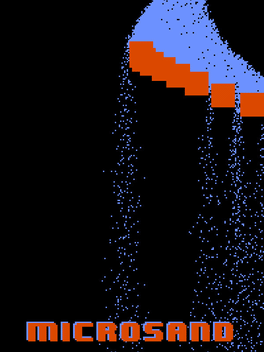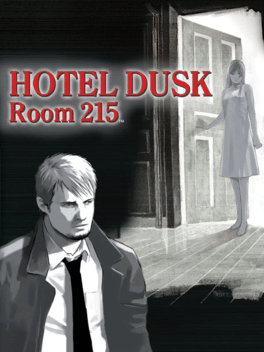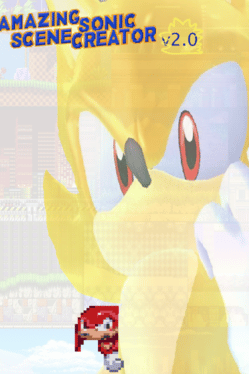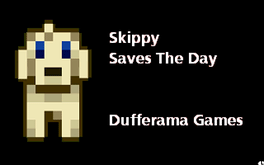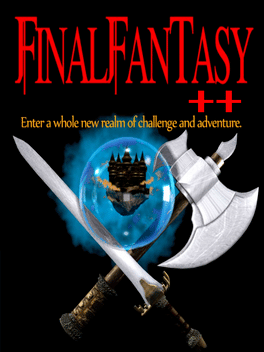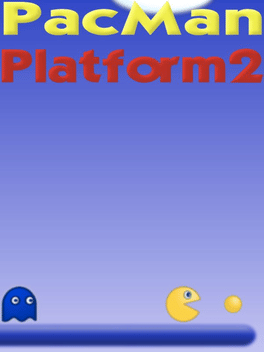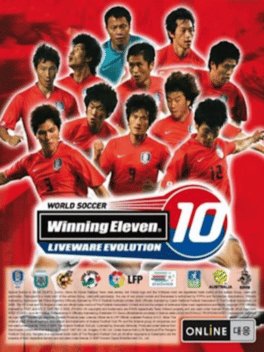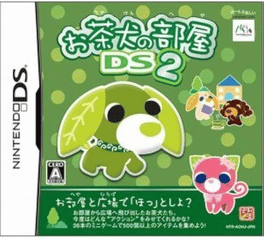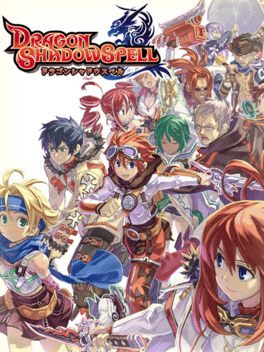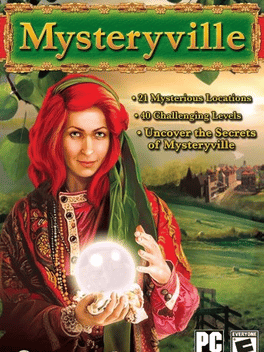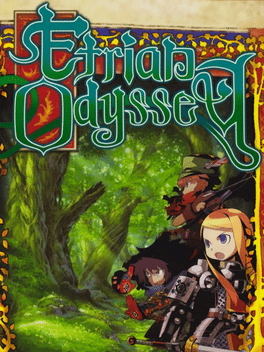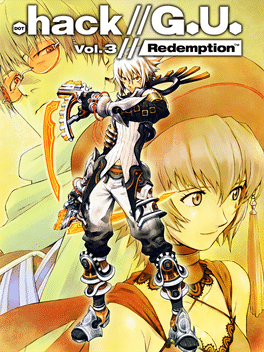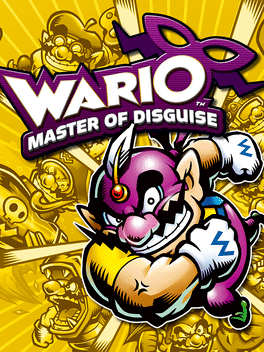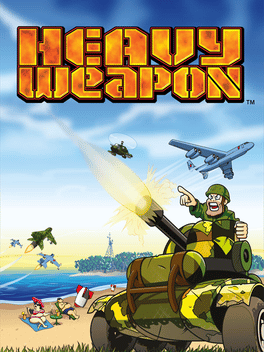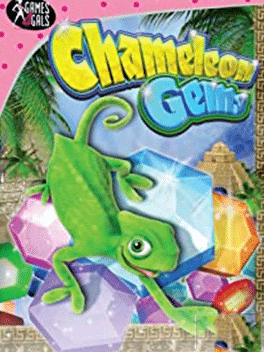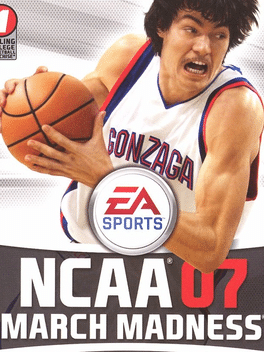New Games - Page 10166
-
MicroSand
2007
-
Hotel Dusk: Room 215
2007
Hotel Dusk: Room 215
2007
star 8.2Take control of an interactive mystery novel and discover the secrets of Hotel Dusk. Who is Kyle Hyde- and what really happened in Room 215? Take stylus in hand and navigate a tangled web of lies, betrayal, and murder to learn the answers. -
Amazing Sonic Scene Creator 2
2007
Game Features- 16-bit, advanced, CD, Chaotix, and next-gen maps. Suggest playing in low quality. -
Skippy Saves the Day
2007
-
Final Fantasy ++
2007
Final Fantasy ++
2007
Final Fantasy ++ (or Final Fantasy Double-Plus, or Final Fantasy Plus Plus) is a “re-imagining” of the very first Final Fantasy game. -
PacMan Platform 2
2007
-
Wolfhound: The Way of the Warrior
2007
Is a Russian computer game in the Action/RPG genre, developed by Gaijin Entertainment for the Microsoft Windows platform. The game is based on novels by Russian writer Maria Semyonova and the movie "Wolfhound", which was released in 2006. -
Bike Racing
2007
-
World Soccer: Winning Eleven 10 - Liveware Evolution
2007
An expanded version of World Soccer: Winning Eleven 10 with online capabilites. -
Ochaken no Heya DS 2
2007
-
Detective Evangelion
2007
Detective Evangelion
2007
Detective Evangelion (Meitantei Evangelion), an adventure/strategy PS2 game published by Broccoli, follows Shinji Ikari, a detective hired by Nerv, as he attempts to uncover the truths behind a series of murders. The game was released in Japan on Jan 17, 2007 and include voices from all the original Seiyū. There were 2 editions of the game: a standard edition which included a Nerv magnifying glass/key chain if you pre-ordered; and the premium edition (about 26,040円) which included a multi-face analog watch. You play as Shinji the detective in an adventure style gameplay, talking to the Nerv personel and other people in the environment in order to pick up clues within the conversations. The game starts as Shinji emerges from an outdoor stall with sirens blaring in the background. He then finds Rei Ayanami being attacked by a teenager with tentacles. Shinji must then fight the teenager in order to free Rei. From this point on, you pick locations and explore, the ultimate goal being to discover the identity of the -
Dragon Shadow Spell
2007
Dragon Shadow Spell
2007
Dragon Shadow Spell is a strategy RPG from Flight Plan, better known as the developers of the Summon Night games until they went bankrupt in 2010. Dragon Shadow Spell was their first attempt at self-publishing a game, and I have long wanted to see what else Flight Plan could come up with apart from Summon Night -
Mysteryville
2007
Mysteryville
2007
Sinister things are happening in Mysteryville: all cats have disappeared from this little town. Young journalist Laura Winner starts to investigate this odd crime. Using her wits and courage she becomes a true detective and starts to discover all of Mysteryville’s secrets. She needs to traverse her way through 21 locations, interview the town’s residents, figure out their clues and find all the evidence that she’ll need to solve the mystery of the vanishing cats. Mysterious puzzles, hidden object searches, and a funny adventure are waiting for you! This mysterious crime story and classic hidden object game will be appreciated by cats and kitten lovers! -
Shining Force EXA
2007
Shining Force EXA
2007
star 6A bitter war between two world superpowers has raged on for decades with armies of beasts and demons devastating the people and the land. With both sides deadlocked, two young heroes rise up to begin a heroic journey to stop the fighting and unite the divided world. As either Toma, a talented sword fighter boy, or Cyrille, a cunning female sorceress, you'll venture into a stunning world of swords and sorcery teeming with a huge variety of tribes. With aggressive offensive and defensive strategies, you'll lead your battle party into combat while protecting your home base, the Geo Fortress, from massive attacks. -
Etrian Odyssey
2007
Etrian Odyssey
2007
star 6.9In a vast and fertile land lies a small town known as Etria, a peaceful village that became famous for a startling discovery. A crack in the vast forest opened at Etria's edge, leading downward like a gaping maw. It all began there... Your salvation in the labyrinth is in your own hands: Create your own team of adventurers to withstand the maze's fierce battles, while creating your own dungeon maps using the Nintendo DS touch screen outside of combat. Lush 3D graphics and a world-class soundtrack puts an exquisite face on the mortal danger that lurks at every step. -
.Hack//G.U. Vol. 3: Redemption
2007
star 7.Hack//G.U. Vol. 3: Redemption is the third entry in the .hack//G.U. series containing: Vol. 1: Rebirth, .hack//G.U. Vol. 2: Reminisce and .hack//G.U. Vol. 3: Redemption. As in the previous .hack games, .hack//G.U. simulates a massively multiplayer online role-playing game as the player controls a character who starts playing it. Players assume the role of a participant in a fictional game called The World. While in The World, the player controls the on-screen player character, Haseo, from a third-person person perspective (with optional first-person mode). The player may control the camera using the game controller's right analog stick. Within the fictional game, players explore monster-infested fields and dungeons as well as "Root Towns" that are free of combat. They also can "log-off" from the game and return to a computer desktop interface which includes in-game e-mail, news, and message boards, as well as desktop and background music customization options. In Reminisce, an optional card game called "Crimson V -
Wario: Master of Disguise
2007
star 5.3The world's most low-down and ornery garlic-lover never lets a get-rich quick scheme pass him by. Wario: Master of Disguise opens with our money-mad hero taking a break from being a shady software impresario to watch a TV show about a master thief. Working himself up into a lather of jealousy, Wario leaps through the screen and embarks on his own glamorous globe-trotting career as a thief. With the helpful advice of a mustachioed magic wand named Goodstyle, you'll soon learn how to use your DS stylus to draw specific designs on Wario to give him new costumes. Break into exotic locations, from a luxury liner & watery ruins to an Egyptian pyramid, all in the hopes of grabbing as much treasure and loot as Wario can carry. -
Heavy Weapon
2007
Heavy Weapon
2007
Heavy Weapon unleashes adrenaline-soaked side-scrolling shoot-'em-up arcade action. With a blast of retro eighties videogame chic, Heavy Weapon brings classic shooter action and explosive power. Fight through 19 story-based missions to upgrade six different weapon banks, or jump into instant action with the blazing Survival mode. Grab your friends and storm across enemy lines in co-operative multiplayer modes! Are you ready for the furious fun of Heavy Weapon? -
Chameleon Gems
2007
-
NCAA March Madness 07
2007
star 6.8The NCAA Basketball (formerly NCAA March Madness) series was a College basketball game which was published by EA Sports from 1998 until 2009. After EA Sports' rival publisher 2K Sports cancelled its own college basketball game, College Hoops, in 2008, EA changed the name of the series from NCAA March Madness to NCAA College Basketball. The series was discontinued on February 10, 2010.[1] Like other games based on NCAA sports, it could not feature the players' names (as that is against NCAA policy/rules), so only the players' numbers were used in the rosters. Users were able to edit the rosters, putting in the correct names for each team if they wished to do so. Many player last names were built into the in-game commentary, like in the NBA Live series. Verne Lundquist, Brad Nessler, and Gus Johnson lent their voices for play-by-play in the games at various times. Lundquist was the original announcer, with Nessler taking over in the mid-2000s and Johnson joining him for the most recent game in the series. Bill Raft

